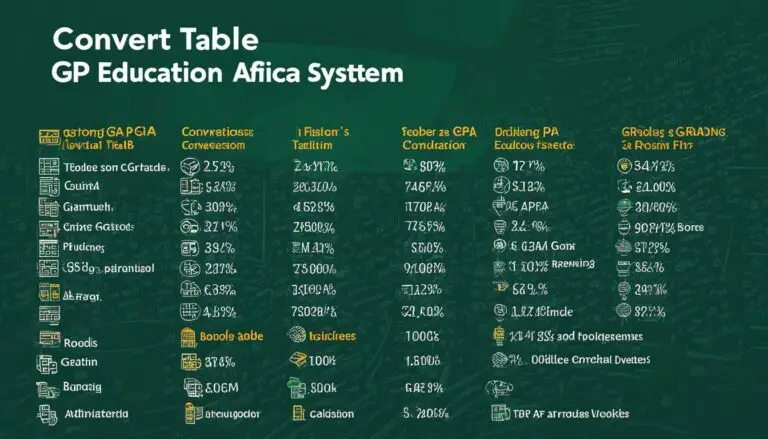Can I Attend Two Colleges at Once? Exploring the Possibility of Dual Enrollment
Attending college is a significant investment of time and money, and students always look for ways to optimize their education.
One question often arises is whether attending two colleges at once is possible. The answer is yes, but it needs careful planning and consideration.
Dual enrollment means attending two colleges simultaneously. It’s an excellent option for students aiming to save costs, enjoy a flexible schedule, or delve into varied subjects.
However, it is essential to note that attending two colleges simultaneously can be challenging and requires a high level of organization and time management.
There are several factors to consider when deciding whether to attend two colleges at once, including the cost of tuition, the availability of courses, and the transferability of credits.
Ensuring that both colleges are accredited and that the courses taken will count toward the student’s degree program is also essential.
The Pros and Cons of Attending Two Colleges
Attending two colleges simultaneously, or dual enrollment can be attractive for students who want to expand their course options, save money, and have more schedule flexibility. However, there are also some potential downsides to consider.
Pros
More Course Options
Students can utilize a broader range of course offerings by attending two colleges. This can be especially beneficial for students with specific academic interests unavailable at their primary institution.
Save Money
Taking classes at community colleges or online while still in high school can save you money on college credits. This way, students can pay less but still get credits for their primary college. It’s a smart way to save money in the long run.
Schedule Flexibility
Attending two colleges can also provide students with more scheduling flexibility. They can choose courses that fit their schedule and work around any conflicts.
Cons
Increased Workload
Attending two colleges means taking on a heavier workload. Students must balance the demands of two different institutions, which can be challenging and time-consuming.
🌟 Hey Students! 🚀 Ready for the ultimate experience? Join us on Studentsinside.com's Facebook, YouTube, WhatsApp, and LinkedIn. Click now for tips, fun, and success vibes! 🌈✨ #StudentLife #JoinUs
Potential for Conflicting Schedules
Managing schedules between two colleges can be difficult, especially if the institutions have different academic calendars. This can lead to conflicts with exams, assignments, and other deadlines.
Lack of Campus Involvement
Attending two colleges can also mean taking advantage of campus involvement opportunities. Students may need more time to participate in extracurricular activities or events at either institution.
Overall, attending two colleges at once can have both advantages and disadvantages. It is essential for students to carefully consider their goals and priorities before making a decision.
Financial Considerations
Attending two colleges at once can be smart for many reasons, but it can also come with some financial considerations. Here are some things to keep in mind when considering dual enrollment:
Financial Aid
If you plan to attend two colleges simultaneously, you may wonder how financial aid will work. Generally, students can only receive financial aid from one school at a time.
However, if both schools are part of a consortium agreement, you may receive aid from both schools.
A consortium agreement between multiple colleges lets students take classes at each school and easily transfer credits between them.
If you plan to attend two schools not part of a consortium agreement, you may need to alternate semesters between the two schools to receive aid. It’s important to talk to the financial aid offices at both schools to understand how help will work in your situation.
Scholarships
If you are receiving scholarships from either of the schools, check with the scholarship provider to see if there are any restrictions on dual enrollment.
Some scholarships may only apply to one school, while others may allow you to use the scholarship at either school. It’s essential to read the terms and conditions of your scholarships carefully to avoid any surprises.
Cost Savings
One of the benefits of attending two colleges at once is cost savings. By taking classes at a community college or a less expensive school, you can save on tuition while still earning credits towards your degree.
However, it’s essential to remember that attending two schools may also come with additional costs, such as transportation and textbooks.
Academic Implications
Attending two colleges at once can have significant academic implications. Students must consider the impact on their GPA, degree requirements, double major, higher placement classes, graduation requirements, and articulation agreement, if any.
One of the most significant academic implications of attending two colleges at once is the impact on GPA. Students must maintain a good GPA in both colleges to avoid academic probation or dismissal.
It is essential to ensure that the course load is manageable and that the student can handle the coursework in both colleges.
Another academic implication of attending two colleges at once is the impact on degree requirements.
Students need to ensure that the courses taken in both colleges satisfy the degree requirements of both colleges. Planning the course load carefully ensures the student can graduate on time.
Double major is another academic implication of attending two colleges at once. Students need to consider pursuing a double major in both colleges. It is essential to ensure that the courses taken in both colleges satisfy the requirements for both majors.
Higher placement classes are another academic implication of attending two colleges at once. Students need to ensure that the courses taken in both colleges satisfy the requirements for higher placement classes. Planning the course load carefully ensures the student can handle the workload.
Graduation requirements are another academic implication of attending two colleges at once. Students need to ensure that they meet the graduation requirements of both colleges. Planning the course load carefully ensures that the student can graduate on time.
Finally, articulation agreement is another academic implication of attending two colleges simultaneously.
Students must ensure that both colleges have an articulation agreement allowing them to transfer credits between the colleges. Planning the course load carefully ensures students can transfer credits between the colleges.
Credit Transferability
One of the main concerns for students who plan to attend two colleges at once is whether credits earned at one school will be transferable to the other.
The transferability of credits depends on various factors, such as the accreditation of the schools, the courses taken, and the academic policies of each institution.
It is essential to note that not all credits earned at one college may be transferable to another school. The receiving school may have different requirements or not accept credits from the sending institution.
Therefore, students should carefully research the credit transfer policies of both schools before enrolling in courses.
Other similar schools usually accept credits from regionally accredited schools. But it’s always good to check with the new school to ensure your credits will transfer.
Keep in mind that colleges often have their own rules for transferring credits. Some might only take credits from courses where you got a C grade or better, while others may cap the number of credits you can transfer.
Therefore, students should carefully review the credit transfer policies of both schools to ensure that they meet all requirements.
Navigating Course Availability
When attending two colleges simultaneously, navigating course availability is one of the biggest challenges. It’s important to plan which courses will be taken at each institution and ensure they are distinct and distinct.
One helpful tool for navigating course availability is to consult the course catalogs of each institution. Most colleges and universities have online course catalogs listing the courses offered each semester or quarter.
Another strategy for navigating course availability is communicating with professors and advisors at both institutions. They can provide guidance on which courses are most important to take at each institution and can help students navigate any scheduling conflicts.
It’s also important to remember that some courses may not be available for dual enrollment. For example, some institutions may restrict which non-degree-seeking students can take courses. It’s essential to research these restrictions ahead of time and plan accordingly.
Co-Enrollment and Cross-Registration
Co-enrollment and cross-registration are two ways for students to attend two colleges simultaneously. Co-enrollment is when a student is enrolled in two colleges or universities simultaneously.
This can be done by taking courses at both institutions simultaneously. Cross-registration is a similar process where a student takes courses at one institution while being enrolled at another.
There are several benefits to co-enrollment and cross-registration. One of the most significant benefits is the opportunity to take advantage of the resources available at both institutions.
For example, a student may want to take a course at a community college to save money while taking courses at a four-year university to earn a degree. This allows the student to get the best of both worlds.
Another benefit of co-enrollment and cross-registration is the flexibility it provides. Students can take courses at one institution during the day and at another at night or on weekends.
This allows students to work around their schedules and take courses that may not be available at one institution.
However, there are also some challenges associated with co-enrollment and cross-registration. One challenge is the logistics of scheduling and planning.
Students need to carefully plan their schedules to ensure they can attend all of their courses and meet the requirements of both institutions.
A challenge students face is ensuring their credits from one school are accepted by another. This process can be tricky and needs good planning between both schools.
Community Colleges vs. Four-Year Schools
When considering attending two colleges at once, it’s essential to understand the differences between community colleges and four-year schools.
Community colleges are often seen as a more affordable option for students who want to save money on tuition and fees.
Based on the 2021 Community College Review, in-state students pay an average of $5,155 yearly at public community colleges, while out-of-state students pay $8,835.
This is much less than the often over $10,000 yearly fees at four-year universities for in-state students.
Community colleges also offer the convenience of night and weekend classes, ideal for those with jobs or other obligations.
Plus, their smaller class sizes often mean students get more personalized attention from teachers.
However, there are also some drawbacks to attending a community college. For example, community colleges may offer fewer extracurricular activities or resources than four-year universities.
Additionally, community colleges may have a different level of academic rigor than four-year universities, which could make it more difficult for students to transfer credits to a four-year school.
On the other hand, four-year universities offer a more traditional college experience, complete with dorms, meal plans, and a wide range of extracurricular activities.
Additionally, four-year universities often have more resources available to students, such as career services and research opportunities.
However, attending a four-year university can be significantly more expensive than attending a community college. Additionally, four-year universities may have more stringent admission requirements, which could make it more difficult for some students to gain acceptance.
Finally, four-year universities may offer a different level of flexibility than community colleges, making it more difficult for working students or having other commitments.








